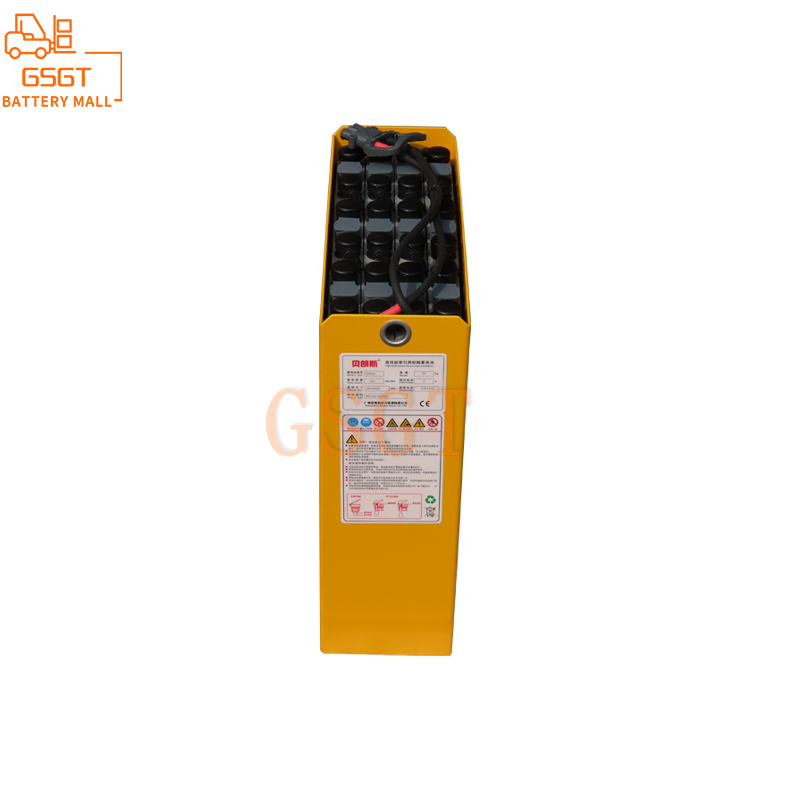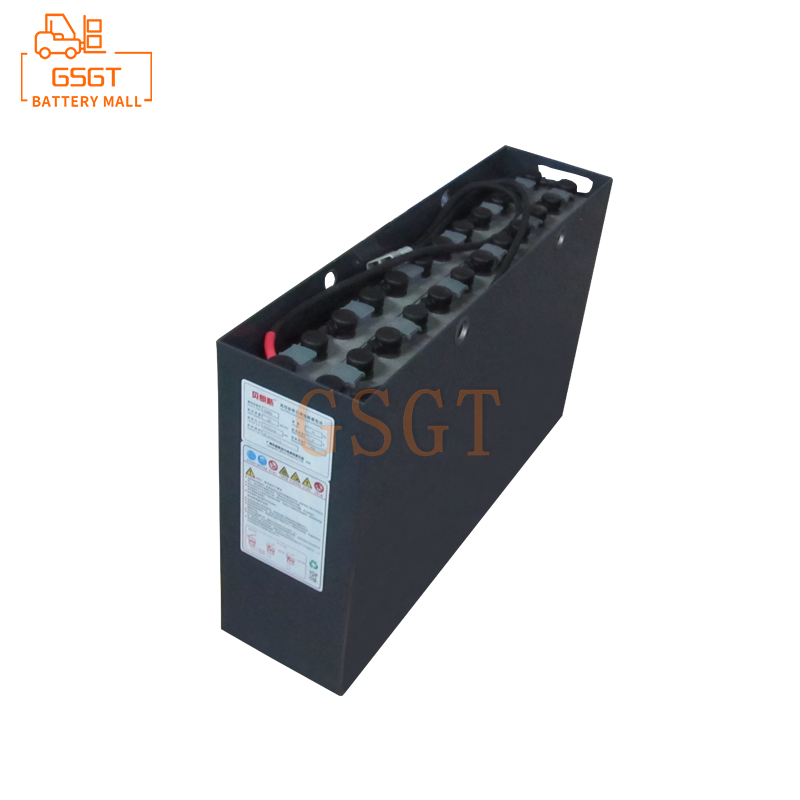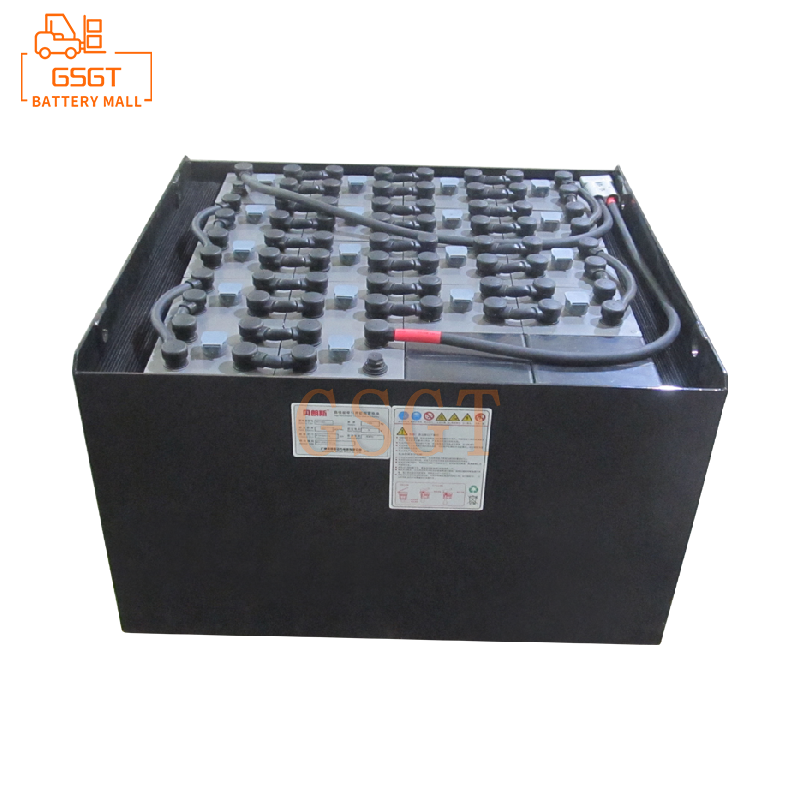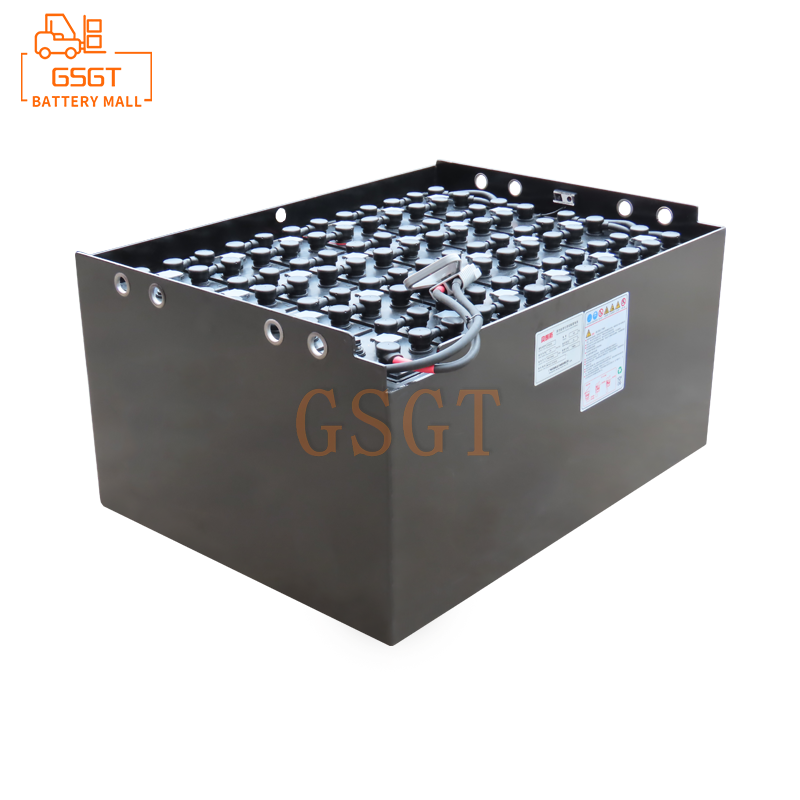Time:2025-06-13 10:42:51
Browse:600
Introduction
In the fields of logistics, warehousing and industrial production, forklifts, as key material handling equipment, have a significant impact on operating costs due to the performance and lifespan of their power source batteries. Lead-acid batteries are widely used in forklift power systems due to their advantages such as mature technology and relatively low cost. However, lead-acid batteries are prone to sulfation, which greatly shortens the battery's service life and increases operating costs. How to economically and effectively solve the sulfation problem of forklift batteries has become the focus of attention for many enterprises. This article will deeply analyze the causes of sulfation in forklift batteries and conduct a comparative analysis of several common economic solutions, aiming to provide scientific and reasonable decision-making basis for enterprises.
1. The Principle and Hazards of Sulfation in ForkLift Batteries
(1) Vulcanization Principle
During the normal charging and discharging process of lead-acid batteries, complex chemical reactions occur inside them. During discharge, lead dioxide at the positive electrode and lead at the negative electrode react with sulfuric acid in the electrolyte to form lead sulfate and water, simultaneously releasing electrical energy. When charging, lead sulfate is reduced back to lead dioxide and lead. However, when a battery experiences undercharging, over-discharging, or long-term idleness, the lead sulfate on the negative plate cannot be completely converted into lead. Some of the lead sulfate will gradually form large and hard crystals that adhere to the surface of the plate. This is known as "sulfation". These lead sulfate crystals have poor electrical conductivity, which can clog the pores of the plates, increase the internal resistance of the battery, hinder the normal reaction between the electrolyte and the plates, and lead to a decline in battery performance.
(2) Hazards of vulcanization
Capacity attenuation: After vulcanization, the actual discharge capacity of the battery is significantly reduced, the working time of the forklift is obviously shortened, and it cannot meet the daily operation requirements, reducing work efficiency. For instance, a forklift that could operate continuously for 8 hours when fully charged may only be able to work for 4 to 5 hours after the battery gets sulfated, seriously affecting the continuity of logistics operations.
Abnormal charging: During charging, the battery shows a shortened charging time, quickly indicating that it is fully charged, but the actual stored power is far below the normal level. At the same time, during the charging process, the battery gets extremely hot, water consumption increases, and there may even be a situation where it fails to charge, further exacerbating battery damage.
Shortened lifespan: If the persistent sulfation problem is not resolved, it will cause the active substances on the battery plates to fall off, accelerate battery aging, significantly shorten the battery's service life, force enterprises to frequently replace batteries, and increase procurement costs. Under normal circumstances, the service life of lead-acid batteries in forklifts can reach 2 to 3 years, while batteries with severe sulfation may need to be replaced within one year or even less.
2. Common Economic Solutions for Forklift Battery sulfation
(1) Repair solution addition method
Principle: The repair solution usually contains a specific proportion of sulfuric acid, distilled water and some additives. The principle of its operation is to add repair solution, adjust the density and composition of the electrolyte, promote the dissolution and transformation of lead sulfate crystals, and at the same time, the additive can inhibit the further sulfation of the plates and improve the chemical reaction environment inside the battery, thereby restoring the battery capacity to a certain extent.
Cost analysis: The procurement cost of repair fluid is relatively low. The price of a bottle of repair fluid ranges from tens to hundreds of yuan, depending on the brand and capacity. The operation of adding repair solution is relatively simple and does not require professional equipment. Internal personnel of the enterprise can complete it after simple training, so the labor cost is also relatively low.
Effect evaluation: For batteries with a relatively mild degree of sulfation, adding the repair solution may have a certain effect. The battery capacity can be restored by about 10% to 30%, which can extend the working time of forklifts in the short term. However, for batteries with severe sulfation, the effect of the repair solution is limited and it is difficult to solve the problem fundamentally. Moreover, the repair effect lasts for a relatively short time. Generally, the battery performance will gradually decline again after 1 to 2 months.
(2) Pulse repair method
Principle: The pulse repair equipment outputs high-frequency and high-voltage pulse current to the battery. By taking advantage of the instantaneous impact of the pulse current, it breaks the lead sulfate crystals on the surface of the plates, converting them back into active substances that can participate in chemical reactions. This restores the electrical conductivity and chemical reactivity of the battery plates, achieving the purpose of battery repair.
Effect evaluation: The pulse repair method has a good repair effect on moderately sulfated batteries, and the battery capacity recovery rate can reach 30% - 60%. The repaired battery can significantly extend the working time and improve the performance of the forklift. However, the operation of pulse repair equipment is relatively complex, requiring professional personnel for operation and maintenance. Moreover, for severely sulfated batteries, multiple repairs may be needed to achieve certain results, and even some severely sulfated batteries cannot fully restore their performance through pulse repair.
(3) Plate replacement method
Principle: When the battery plates are severely vulcanized and their performance cannot be effectively restored through other repair methods, replacing the plates is a relatively thorough solution. Remove the vulcanized plates inside the battery, replace them with new ones, and clean and maintain the interior of the battery at the same time. After reassembly, the battery can be restored to a performance state close to that of a new battery.
Cost analysis: The procurement cost of the plates is relatively high. The price of a set of forklift battery plates may be several thousand yuan or even higher, depending on the battery capacity and the material of the plates. The operation of replacing the plates requires professional maintenance personnel and certain maintenance equipment, and the labor cost is also relatively high. The labor cost for one plate replacement may range from several hundred to several thousand yuan. Therefore, the total cost of replacing the plates is generally over several thousand yuan, which is much higher than that of other repair methods.
Effect evaluation: After replacing the plates, the performance of the battery can be significantly improved, basically recovering to 90% - 100% of the new battery, and both the working time and service life can be greatly extended. If the replaced plates are of reliable quality and the subsequent maintenance is proper, the battery can continue to be used for a relatively long time, reducing the trouble and cost of frequent battery replacement for enterprises. However, the process of replacing the plates is rather complicated and the maintenance cycle is long, which may affect the normal use of the forklift. Enterprises need to make equipment allocation and maintenance plans in advance.
(4) Method of replacing new batteries
Principle: Directly purchase brand-new forklift batteries to replace the sulfated and damaged ones. The new batteries have complete performance and capacity, which can ensure the normal and efficient operation of the forklift. At present, the forklift batteries on the market mainly include lead-acid batteries, lithium-ion batteries, etc. Different types of batteries have differences in performance, price and service life.
Cost analysis: The procurement cost of new lead-acid batteries is relatively moderate. The price of a set of medium-capacity lead-acid batteries may range from several thousand to over 10,000 yuan. Lithium-ion batteries, due to their advantages such as high technological content and high energy density, are relatively expensive. Under the same capacity, they may be 2 to 3 times more expensive than lead-acid batteries. In addition to the procurement cost, the installation and commissioning cost of the battery also needs to be taken into account. Generally, the labor installation cost is around several hundred yuan. In addition, lithium-ion batteries have high charging efficiency and low energy consumption during use, which can save certain electricity costs in the long run, but the initial investment cost is relatively high.
Effect evaluation: After replacing the new battery, the performance and working time of the forklift can be comprehensively enhanced. The new battery can operate stably and reliably, reducing the downtime caused by battery failure and improving work efficiency. Compared with lead-acid batteries, lithium-ion batteries have advantages such as fast charging speed, long life, high energy density and low maintenance cost, which can bring better user experience and long-term economic benefits to enterprises. However, if a company's budget is limited and the performance requirements for forklifts are not particularly high, lead-acid batteries remain an economical and practical option.
3. Economic Comparison of Different Solutions
(1) Short-term cost comparison
In the short term, the costs of the repair solution addition method and the pulse repair method are relatively low, with the cost of a single repair generally within several hundred yuan. The cost of the plate replacement method is relatively high, requiring several thousand yuan, while the cost of the new battery replacement method is the highest, especially for lithium-ion batteries, where the procurement cost may be several times that of the repair method. If an enterprise only hopes to solve the battery sulfation problem in the short term, maintain the basic operation of the forklift, and the degree of battery sulfation is relatively mild, the method of adding repair solution or pulse repair method may be a more suitable choice. However, if the battery is severely sulfated, these two methods may not achieve the expected effect. At this time, replacing the plates or using a new battery may be more necessary.
(2) Long-term Cost comparison
In the long term, although the initial costs of the plate replacement method and the new battery replacement method are high, they can effectively extend the battery's service life and reduce the downtime losses and additional costs caused by frequent maintenance and battery replacement. For instance, after replacing a new lead-acid battery, it does not need to be replaced again within 2 to 3 years under normal usage conditions. During this period, only simple maintenance and care are required. Lithium-ion batteries have a longer service life, which can reach 5 to 8 years or even longer. They also have high charging efficiency and low energy consumption, and may have a more advantageous overall cost in the long term. Although the single cost of the repair solution addition method and the pulse repair method is low, due to the short duration of the repair effect, frequent repairs may be required for severely sulfated batteries, and the long-term cumulative cost should not be underestimated. Moreover, frequent repairs may cause further damage to the battery and shorten its overall service life.
(3) Comprehensive cost considerations
When comprehensively considering costs, enterprises also need to take into account the indirect losses to production and operation caused by forklift downtime due to battery issues. If forklifts are idle for too long, it may affect the efficiency of goods handling, cause delays in order delivery, and bring economic losses to enterprises. Therefore, it is crucial to choose a solution that can not only effectively address the battery sulfation issue but also minimize downtime to the greatest extent. Replacing the battery with a new one has obvious advantages in enhancing the performance of forklifts and reducing downtime. Although the initial investment is large, from the perspective of long-term comprehensive costs and the stability of production and operation, it may be the most economical choice. For enterprises with limited budgets, low forklift usage frequency and relatively low performance requirements, in the early stage of battery sulfation, the repair liquid addition method or pulse repair method can be tried. When these methods cannot meet the needs, then consider replacing the plates or new lead-acid batteries.
4. Conclusion
The sulfation problem of forklift batteries seriously affects the performance of forklifts and the operating costs of enterprises. Through the comparative analysis of the principles, costs and effects of common economic solutions such as the addition of repair solution method, pulse repair method, plate replacement method and new battery replacement method, it can be known that different solutions have their own advantages and disadvantages. When choosing solutions, enterprises should comprehensively consider factors such as the degree of battery sulfation, the frequency of forklift usage, budget constraints, and requirements for forklift performance. For short-term demands with a relatively mild degree of vulcanization, limited budget and low requirements for forklift performance, the repair liquid addition method or pulse repair method can be used as a preliminary attempt. For enterprises with severe sulfation, those that pursue long-term stable and efficient operation and have relatively sufficient budgets, replacing new batteries or plates might be a more economical and reasonable choice. In conclusion, only by making scientific decisions based on one's own actual situation can the sulfation problem of forklift batteries be effectively solved, operating costs be reduced, and the economic benefits of enterprises be improved.

$1270

$1060

$4220

$5710

MESSAGE
Professional And Efficient
Security
Affordable Price
Professional Services